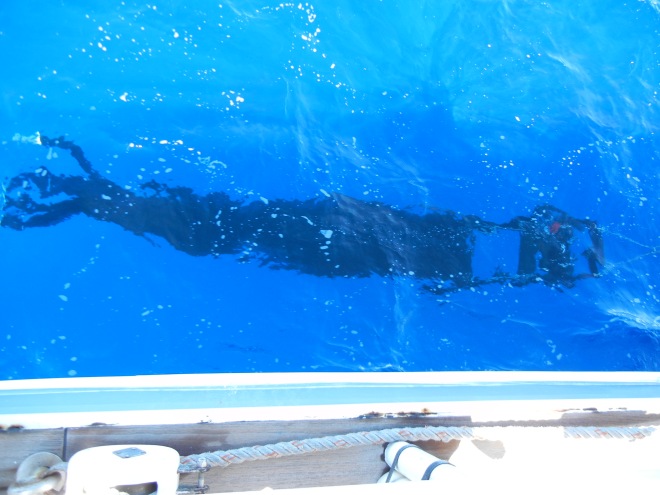Since my voyage to the North Pacific to study plastic, I think the most frequent question I get is: “How big is the garbage patch?”. What a simple question, with such a complex answer! First, I explain our voyage like drawing a line across a sheet of paper… how much can you learn about the paper by just looking at just that line?? The Pacific Ocean is HUGE, and so is its plastic problem. It is going to take decades of research to get a better idea of how much plastic is out there. Secondly, the amount of plastic is always fluctuating, with new plastic being added, and old plastic sinking or leaving the gyre and finding it’s way back to land. Thirdly, it is hard to study plastic at sea. Some floats, some sinks, some is ingested by marine life… how do you come up with a size of the problem?
Scientists are often limited by the technology that is available to them. Perhaps someone will come along with a brilliant new innovation to determine the scope of the Giant Pacific Garbage Patch. For now, the data set grows, giving us a bigger, but still incomplete image. This is how we studied plastic as sea:
Neuston Net: This net is traditionally used to study plankton, the microscopic community of animals and algae adrift in the ocean currents. The fine mesh of this net lets water pass through, but traps the copepods, pteropods, salps, and other alien-like creatures that call the surface currents their home within its folds. Nowadays, this net is also frequently used to study ocean plastic. We typically did neuston tows 4 times a day in the gyre, always towing at 2 anutical miles per hour for 30 minutes so all of your samples could be compared.
Manta Net: This is a neiston net with 2 fiberglass wings on the sides to stabilize it in rough weather. Similarly to the neuston net, it collects samples from the surface only.
MOCNESS (Multiple Opening and Closing Net with Environmental Sensing System)
This beast carries up to 9 nets on its heavy frame (we used 5). These nets are programmed to openand close at different depths, allowing us to collect discrete samples not only at the surface, but at various depths as well! We towed the MOCNESS down to 10 meters (~30ft) and found plastic in every net! Looking just at the surface does not give you a complete picture of how much plastic is out there!
Stay tuned, next time I’ll write more about what we found :O)














